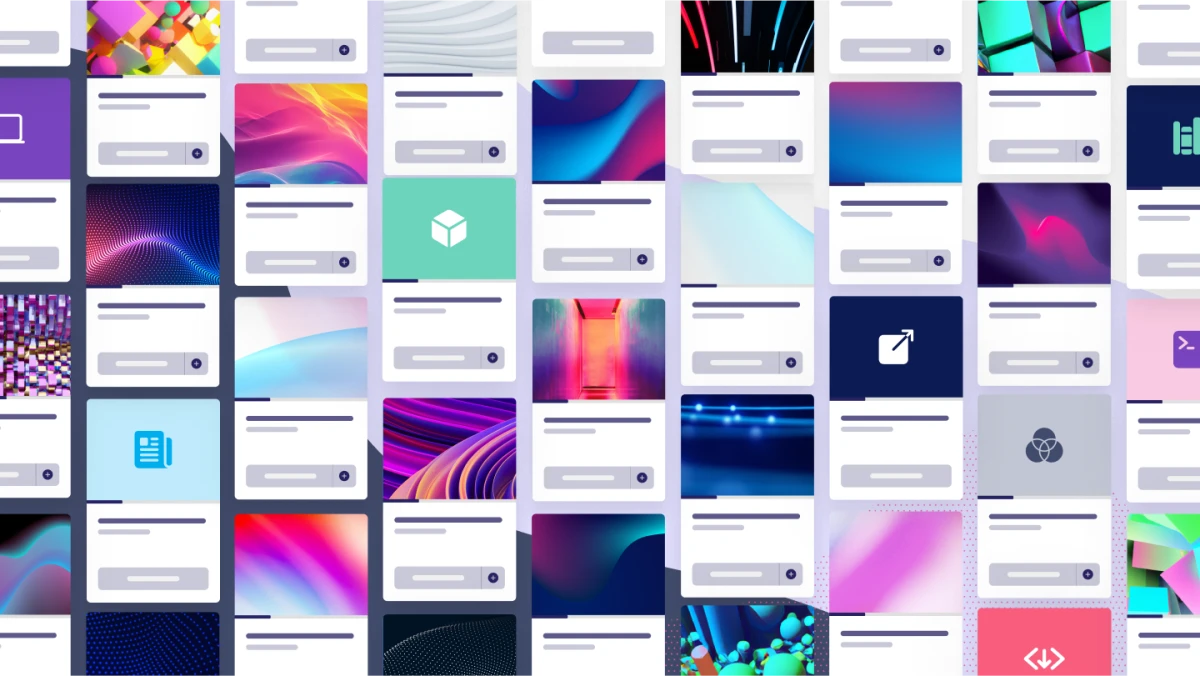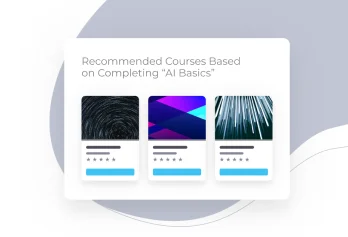When your company begins to consider training content and learning programs, an essential question that eventually arises is: Should I choose off-the-shelf, do-it-yourself (DIY), or custom, professionally built LMS content?
Answering this question may not be as straightforward as it seems — especially if you don’t have a clear idea of the pros and cons of each type of learning content.
Your key focus should be building or shopping for learning content that will achieve your company’s specific learning objectives efficiently and effectively. Some considerations to keep in mind as you make your decision include:
- Pricing
- Level of effort
- Tool skill level
- Subject matter expertise
- Content availability
- Desired learning outcomes
Keep reading to discover the advantages and disadvantages of each content option to help you make the best choice for your company.
Off-the-shelf content
Off-the-shelf content consists of pre-made courses, training content, and learning materials that are instantly ready for sale and use by your teams and employees. This type of course content is pre-formatted and contains generic training and knowledge for each topic. Off-the-shelf learning content can be purchased as a single product, in bundled packages, or as subscriptions for easy training and sharing.
Advantages
Off-the-shelf content offers a lot of advantages within any industry:
- Implement training instantaneously to accelerate learning — you won’t have to wait for courses to be made.
- Choose from a wide range of topics from a content library, increasing time spent on other value-add responsibilities.
- Reduce the total internal resources needed for content creation and training material options.
- Boost overall ROI as courses are more affordable than custom course content.
Disadvantages
However, off-the-shelf content does have a few drawbacks, which may affect your decision:
- Off-the-shelf content options may not meet all specific training and employee learning needs you may have.
- Topics may be over-generalized or lack necessary details.
- Little to no customization and modification options to tailor the content to your needs.
Buy or build?
While DIY content is technically a subset of custom content—which you’ll explore further below—it’s created in-house by your own team or company and requires some content creation skills.
As organizations explore various approaches to creating learning content, many are discovering the immense potential of leveraging emerging technologies like AI to enhance their DIY efforts. AI-generated learning content presents numerous benefits and considerations for organizations:
- Efficiency: GenerativeAI enables the rapid generation of extensive content, significantly reducing the time and effort required for manual creation.
- Personalization: AI's ability to analyze learner data allows for the customization of content to suit individual needs and preferences, thereby enhancing engagement and effectiveness.
- Scalability: Organizations can expand their learning initiatives with AI, accommodating large and diverse audiences without compromising on quality.
- Cost-effectiveness: Automating content creation through AI can lead to lower production costs compared to traditional methods, particularly for repetitive or routine tasks.
Advantages
DIY content may be your preferred choice based on the following reasons:
- Gives you full control over personalized details and specialized expert information that outside sources may not be aware of.
- Cuts costs if you have subject matter experts and instructional design resources on hand.
- Adds flexibility for future tweaks and additional content can be added whenever needed.
Disadvantages
Companies may opt out of DIY content because:
- The potential lack of expertise and quality control. When content is produced in-house without the assistance of professional content creators or instructional designers, there's a risk of inconsistency in quality and effectiveness. Companies may struggle to ensure that the content meets educational standards, engages learners effectively, and aligns with the company's learning objectives. This can result in subpar learning experiences for employees and ultimately hinder the desired outcomes of training initiatives.
- Requires access to a course authoring tool or software, which allows for more interactive content elements and better tracking.
If you’re looking for general or regulation and compliance-related educational content, off-the-shelf may be your best bet. This type of training content offers a wide range of pre-made courses, which can cover much-needed training (e.g. safety, diversity, or security training).
For companies with a strong internal team of experts, it may be preferable to create your own DIY content. This may be the most affordable option, though it works best if your company has employees with design and training experience beforehand to create this learning content. Using an LMS with built-in course authoring can provide your team with even more opportunities for efficiency and cost savings.
Watch the video: The Future of Course Development with Create AI
Curate or create?
Custom content is an umbrella term that covers any training content that has been created and modified for your company’s specific use. In this case, we’ll be referring to custom content for personalized learning and training that is outsourced.
Advantages
Below are some of the top reasons why companies choose to use custom content:
- You require customized courses that are built to fulfill your specific needs and wants. This can include content that is only relevant to your organization or content that is created based on your branded look, feel, and tone.
- When you commission custom content, you typically own that license completely. This way you avoid the long-term content management that comes with off-the-shelf content.
- Custom content can be technical and require expertise beyond what’s available on staff.
Disadvantages
Custom content may not work for everyone, and here are a couple of reasons why:
- Custom content can be expensive and may not fit within your content budget.
- Turnaround is slower as each course needs to be written and designed per your specifications. This reduces immediate efficiency and requires more resources and effort.
How to choose the right type of learning content for you
There’s no one-size-fits-all solution when it comes to LMS content.
Each company has its own learning and training goals that need to be considered before you take the leap and choose off-the-shelf, DIY, or custom learning content.
Working with an external company or team to build custom content to enhance your learning content strategy may be pricey, but it ensures that you’re getting courses that meet the specific standards and content needs of your organization.
Whatever you choose, Absorb LMS has something for you
For organizations aiming to optimize their training strategies, exploring Absorb’s content libraries and AI-driven course builder is a jumpstart. With an extensive array of ready-to-use content spanning various topics and industries, Absorb empowers businesses to swiftly deploy effective training programs. Additionally, with the innovative AI-powered course builder, creating customized courses tailored to specific learning needs becomes effortless. By harnessing these tools, companies can elevate learning experiences, increase employee engagement, and drive organizational growth.
For more information about learning and training content options and how they integrate with Absorb LMS, reach out to our experts or request a demo today.





